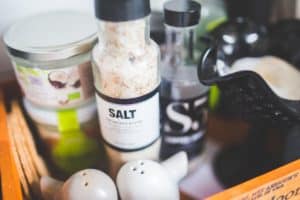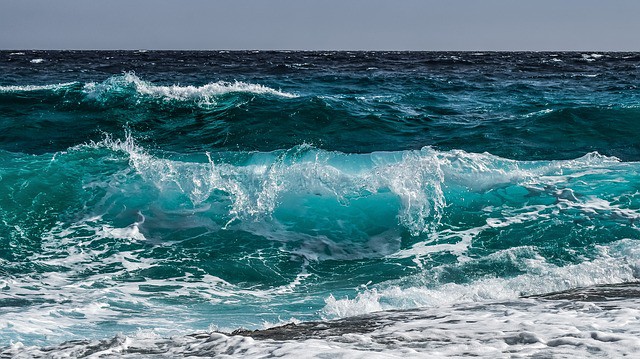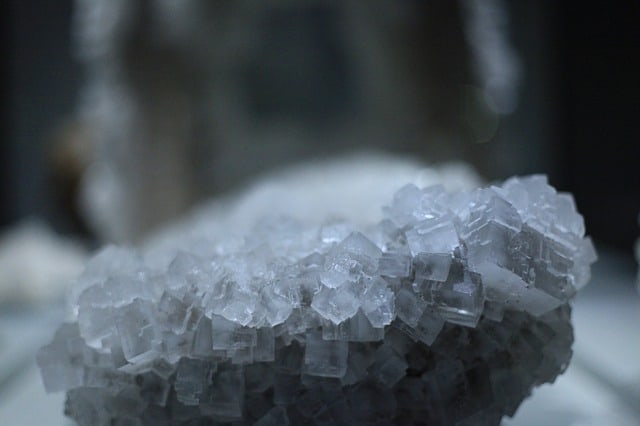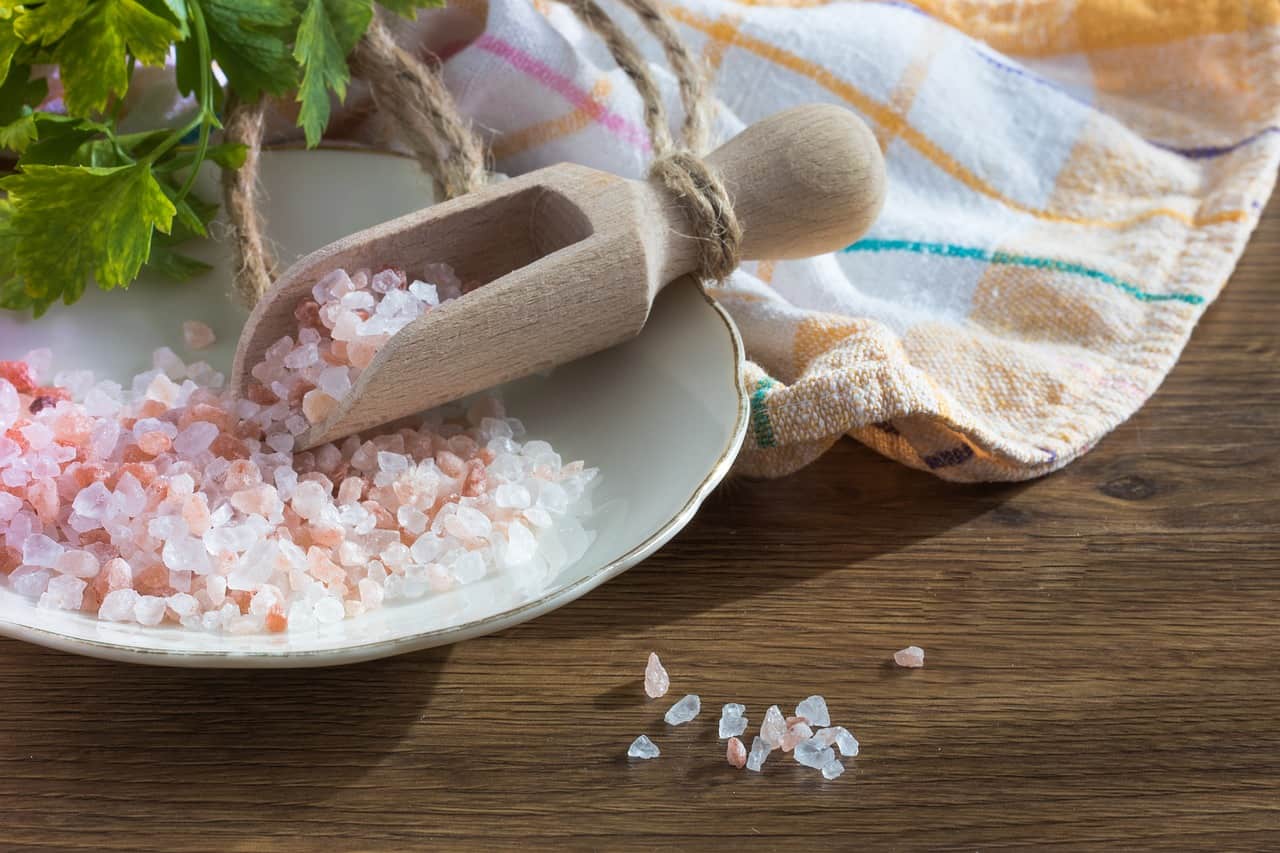Contents
There is a toxic chemical that is in your kitchen that is damaging your health and literally could be killing you.
You even put it in your food and are cooking with it.
If you haven’t guessed it already, I’m talking about table salt.
Aren’t All Salts The Same?

First off, if you think that all salt is the same, you are wrong.
Table salt is heavily processed salt. It is not natural. In the end, what you are putting on your food is a chemical concoction that is missing most of its nutritional value that can cause health problems.
On the other hand, kosher salt or sea salt can be a healthier option.
Most people wonder what is sea salt? Sea salt is a salt that is produced from the evaporation of seawater. Depending on what brand of sea salt you choose, most are less processed than table salt.
There are many benefits of sea salt.
In one study on sea salt and table salt, researchers came to the conclusion that sea salt doesn’t have as much on an effect on raising blood pressure than table salt. This may be from the lower sodium levels or from the minerals in it. (1)
Some sea salts, that we will cover below, are fully unprocessed so they exist in their natural state. These salts can actually improve your health if they are from good water sources.
How is Table Salt Made?
Table salt is typically made by taking natural salts that are extracted from mines. The mined salt is then mixed with water and anti-caking chemicals such as magnesium carbonate, sodium aluminosilicate, talc, sodium ferrocyanide, calcium silicate, calcium phosphate, magnesium silicate, and calcium carbonate. (Sounds tasty!) (2)
Also, potassium iodide added to the salt as an effort to replace some of the naturally occurring iodine.
Then, they strip it of the valuable minerals which are then sold off for higher profits. The remaining mixture is then heated to evaporate the water and turn in back into salt.
Then finally, they mix in bleaching agents to turn the salt the white color that everyone is use to seeing.
Why is Sea Salt Better For You?
 First off, in it’s natural state, salt is something that we need in our diet to survive. (3)
First off, in it’s natural state, salt is something that we need in our diet to survive. (3)
Our body depends on salt for thyroid function, digestion, bone density, circulatory health, and many other things. It is also an electrolyte that helps the function of muscles and nerves.
Without the trace minerals that were stripped out of the table salt, it fails to function in the body as it should. Instead, our body attempts to remove the chemicals that were added in throughout the refining process. Blood pressure rises as the blood carries the impurities away from the heart.
Aside from that, many of the added toxins have carcinogenic properties!
Salts that are in their natural state, like certain sea salts, can assist the body in functioning properly. They also contain naturally occurring iodine in trace amounts.
Keep in mind, if a sea salt is fully processed, it is no different than table salt.
3 Healthy Types of Salt
 Although there are many varieties of pure salt, we go over the big 3 salt producers that you can find in many grocery stores and online.
Although there are many varieties of pure salt, we go over the big 3 salt producers that you can find in many grocery stores and online.
Now, there are many local and regional craft salt producers popping up. If you find any of them, research how they manufacture the salt to see if it is right for you.
High end sea salt is not only becoming more popular for health benefits, but for its delicious flavor too. Many gourmet cooking places are using it in their food as well.
Heads Up: This post contains affiliate links. If you buy something from one of the links, it won’t cost you anything more, but we may earn a small commission. We do our best to only recommend the best products for you. We appreciate you helping us to further our mission of helping people get healthy and to protect the environment.
Himalayan Salt
Himalayan sea salt is from the Punjab region of Pakistan and comes from the Khrewa salt mine. It originates 800 million years ago from when the Earth was covered by water.
It is famous for its pink color. The strange color comes from the high mineral content in the salt like magnesium, calcium, potassium, iron, and copper.
Celtic Salt
Celtic sea salt is also another incredible salt. They harvest it from the ocean by hand and they do not tarnish it.
Currently they harvest it in Guatemala, Europe, and Hawaii. One thing that may surprise you is that you will notice that the sea salt is moist. They refer to this as the brine. This brine is the reason that Celtic Salt is alkaline when dissolved in water.
Real Salt
Real Salt is another natural salt that is made from an ancient sea bed that used to exist in Utah. This historic sea was called the Sundance Sea and it covered most of North America during the Jurassic period.
This amazing salt contains over 60 trace minerals and since it was created so long ago, it is free from modern day pollutants. They mine it from the Redmond mine.
According to their website, they mine, crush, and package Real Salt after it is screened for metal residue and contaminants from the mining it. In other words, it is the purest.
Finally, they claim it has the best taste. So try it out!
Conclusion
Make the switch.
First off, if you have any table salt in your home, get rid of it.
Secondly, start checking the labels on foods that you purchase in the store. If they contain “salt”, or sodium chloride it is best to avoid them. Choose products that at least have sea salt as an ingredient. Ideally, it is best to buy products that don’t contain added salt so that you can put on your own.
Next, be cautious of salt when eating in restaurants. Although it is very likely that most restaurants do not use sea salt in their recipes, you don’t have to add any more on after it comes to your table. If you want to put more salt, bring your own shaker of Himalayan salt or Celtic salt with you.
Finally, when selecting a type of salt for yourself choose the best options. Celtic salt, Himalayan salt, and Real salt are all the some of the healthiest salt to use. They are in their natural states and have all the essential trace minerals without the dangerous ingredients.
By purchasing better options, you will be on the way to good health.
References:
(1) https://www.ncbi.nlm.nih.gov/…
(2) https://en.wikipedia.org/wiki/Salt
(3) https://www.washingtonpost.com/

My passion for health and wellness started in 2009. My personal mission is to help inspire and guide people on their health journey. I am currently a NASM certified nutrition coach.
